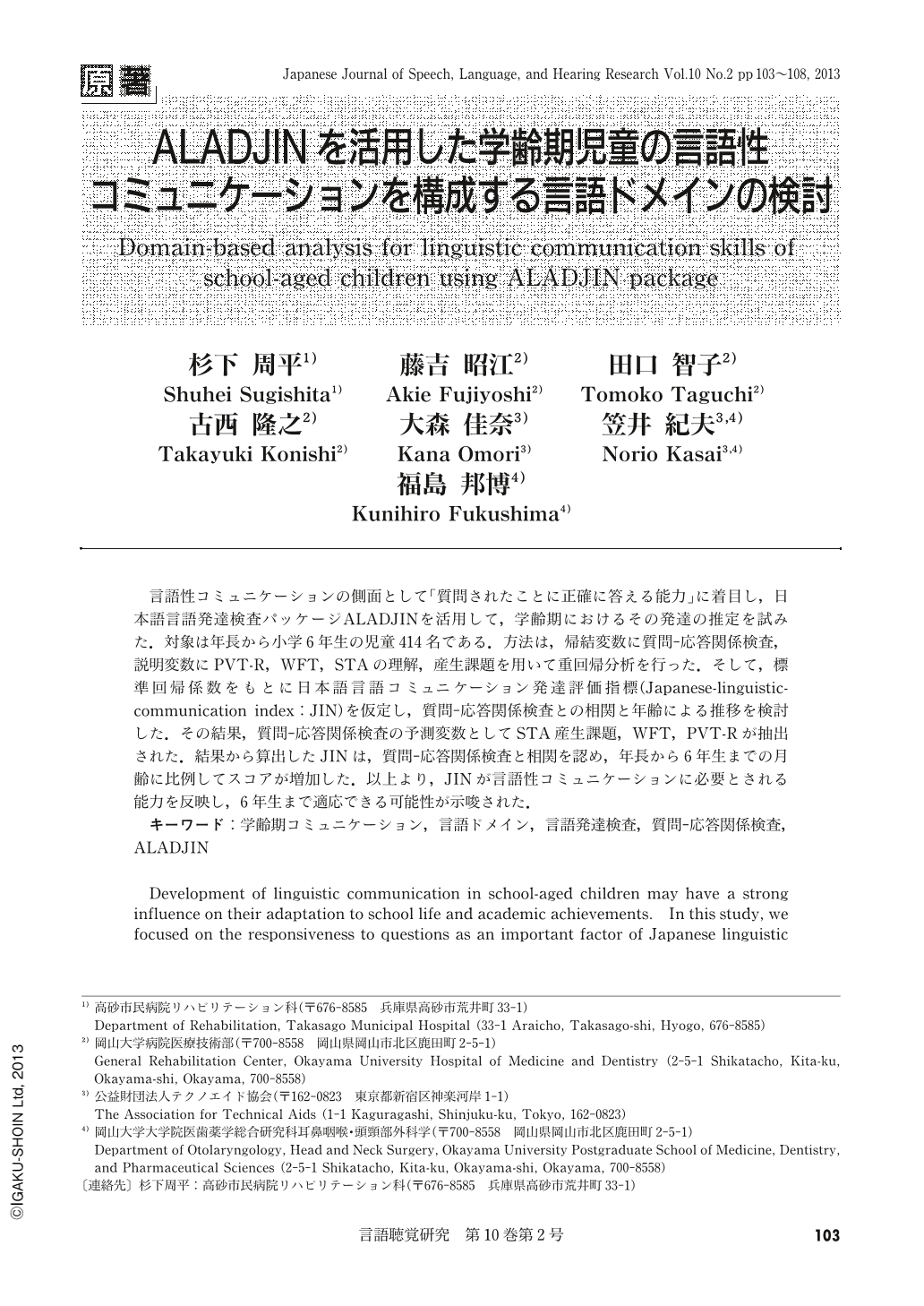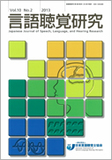Japanese
English
- 有料閲覧
- Abstract 文献概要
- 1ページ目 Look Inside
- 参考文献 Reference
言語性コミュニケーションの側面として「質問されたことに正確に答える能力」に着目し,日本語言語発達検査パッケージALADJINを活用して,学齢期におけるその発達の推定を試みた.対象は年長から小学6年生の児童414名である.方法は,帰結変数に質問-応答関係検査,説明変数にPVT-R,WFT,STAの理解,産生課題を用いて重回帰分析を行った.そして,標準回帰係数をもとに日本語言語コミュニケーション発達評価指標(Japanese-linguistic-communication index:JIN)を仮定し,質問-応答関係検査との相関と年齢による推移を検討した.その結果,質問-応答関係検査の予測変数としてSTA産生課題,WFT,PVT-Rが抽出された.結果から算出したJINは,質問-応答関係検査と相関を認め,年長から6年生までの月齢に比例してスコアが増加した.以上より,JINが言語性コミュニケーションに必要とされる能力を反映し,6年生まで適応できる可能性が示唆された.
Development of linguistic communication in school-aged children may have a strong influence on their adaptation to school life and academic achievements. In this study, we focused on the responsiveness to questions as an important factor of Japanese linguistic communication, and attempted to estimate its development during school age. Subjects included 429 children aged 5 to 12. Their scores on the Test of Question-Answer Interaction Development (TQAID) were designated as an objective variable, while their scores for PVT-R, WFT, and STA were set as explanatory variables for multiple linear regression analysis. Based on the standardized partial regression coefficient, we also assumed the Japanese-linguistic-communication index (JIN) and examined how JIN relates to the TQAID scores and age. As a result, predictor variables extracted were STA (production), WFT, PVT-R (p<0.0001), and the prediction relation was JIN=PVT-R+(WFT×1.28)+(STA production×1.58). JIN was well correlated with the TQAID scores (r=0.77) and was found to increase throughout school age. Thus, JIN seems to reflect the ability of Japanese linguistic communication evaluated by TQAID and can be used during the elementary school age. JIN might serve as one of useful tools to evaluate children's linguistic communication.

Copyright © 2013, Japanese Association of Speech-Language-Hearing Therapists. All rights reserved.


